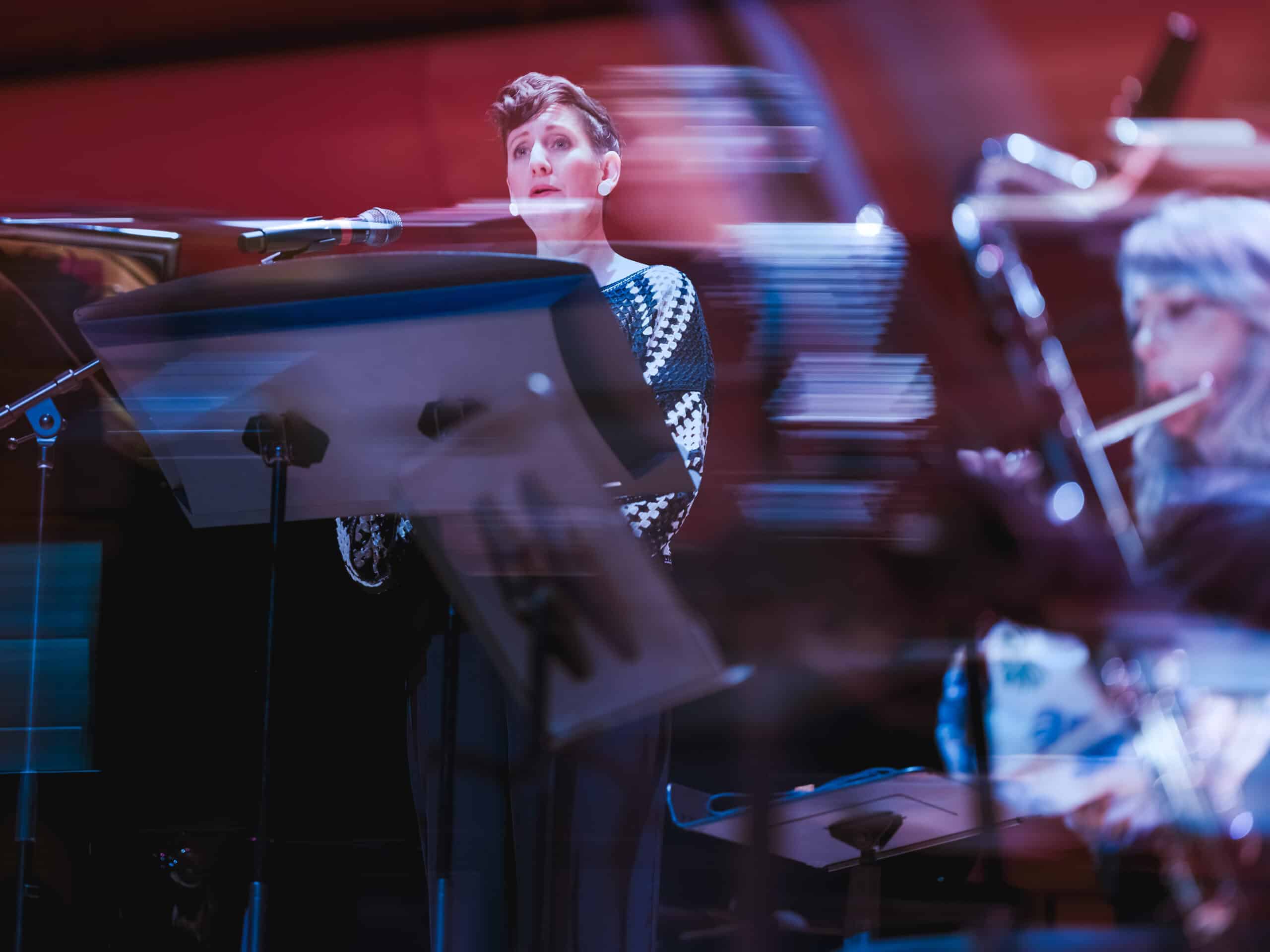
By Meghan Power
Land’s End has been dedicated to presenting innovative works by today’s most compelling composers. Since 2023, Land’s End has maintained a residency at the Mount Royal University Conservatory in Calgary, further strengthening their ties to education and the next generation of musicians.
To date, Land’s End has premiered and commissioned over 130 works by Canadian and Albertan composers. They have also collaborated with composers worldwide, including Allan Gordon Bell, Omar Daniel, Dorothy Chang, Alexina Louie, Jocelyn Morlock, Salina Fisher, and R. Murray Schafer. But it was a chance encounter with Grammy Award and Pulitzer Prize winning American composer, John Corigliano, at Calgary’s National Music Centre that became the impetus for the ensemble’s most recent album.
The story begins in 2018 when Land’s End had the honour of performing Mr. Corigliano’s composition for voice and chamber music, Mr. Tambourine Man: Seven Poems of Bob Dylan. “Fortunately for us, Mr. Corigliano was in the audience, as a guest composer.” According to Vincent, Corigliano was so enthralled by the ensemble’s performance that he awarded them exclusive rights to the first commercial recording.
The ensemble then managed to secure a recording deal with one of the world’s leading classical music labels, Naxos Records. The recording features all members of the Land’s End Ensemble and guest artists, Laura Hynes, (soprano) and Karl Hirzer (conductor). The album also features a recording of Vincent Ho’s mythically inspired composition Gryphon Realms, a three-piece movement originally commissioned by Gryphon Trio. The pairing of the two epic compositions have received rave reviews in classical music journals from around the world, like The Whole Note, BBC Music Magazine, and Pizzicato.
However, in 2020, the lives of many musical performers around the world, including Land’s End Ensemble, were halted due to the global pause of the world-wide pandemic. It wasn’t until 2024 that their album was finally released. Having the album released was a great accomplishment, but also a big part of being a musician, no matter what genre, is being able to perform live. For Land’s End, being able to perform their work for a live audience was essential: “In order to bring this album to life,” Vincent explains, “we needed everyone involved, from the ensemble, to the vocals, to the conductor, to all the teams behind the scenes, and maybe, most importantly, we needed a premiere music venue. And, of course, we also needed money.”
Thanks to funding from Calgary Arts Development (CADA), Land’s End Ensemble was able to gather all the artists involved in the recording, back together, in Calgary for a live performance. “Funding through CADA also allowed us to book the Eckhardt Gramattė Hall, at the Rozsa Centre, University of Calgary,” says Vincent, “which is considered to be one of Western Canada’s premiere recital halls. Perhaps most important, according to Vincent, is the opportunity this kind of funding affords artists to advance their form and pursue the study and performance of living composers; thereby giving local Calgary artists, present and future, a chance to be celebrated at a global level and create a lasting legacy.”